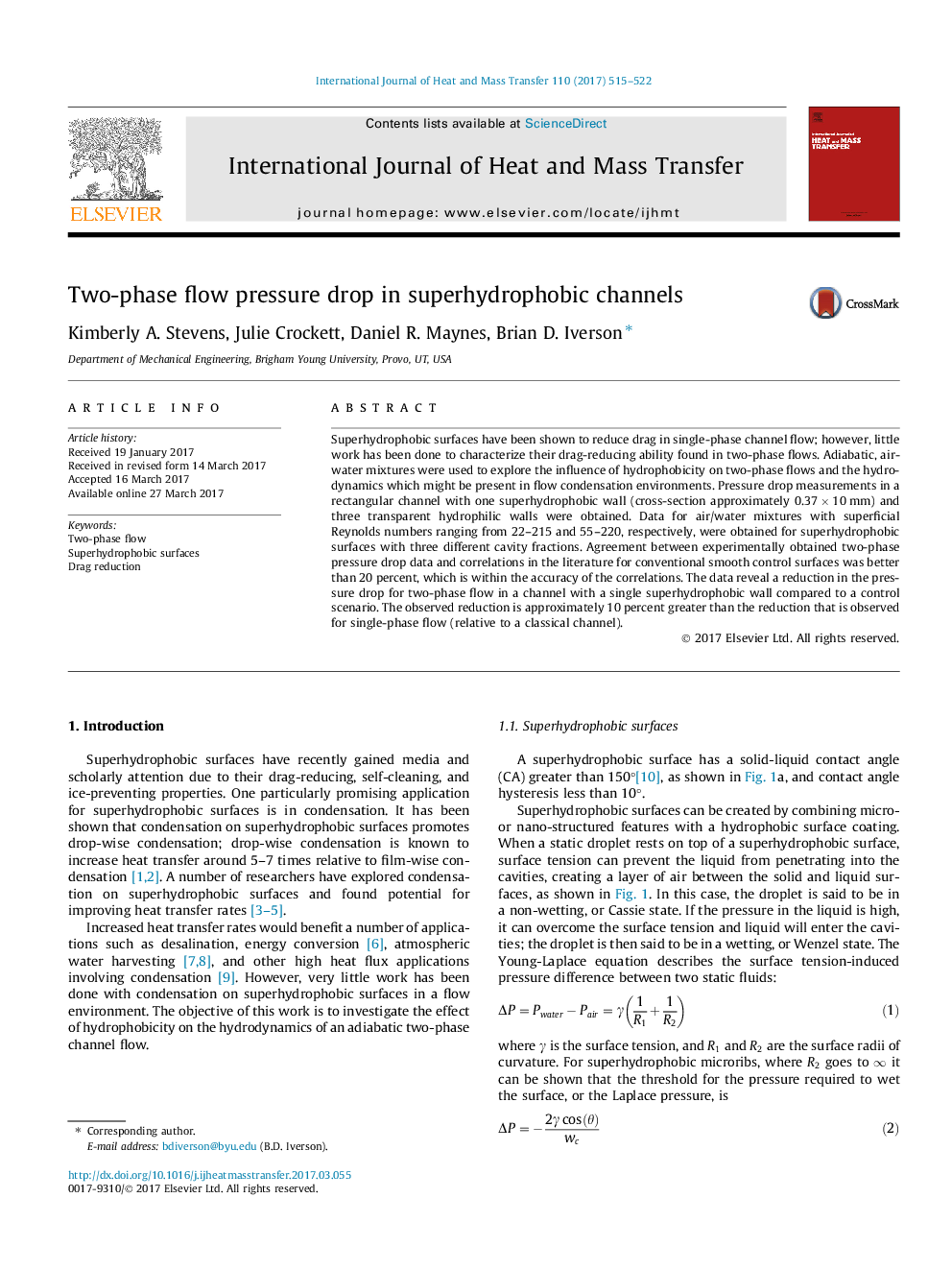| کد مقاله | کد نشریه | سال انتشار | مقاله انگلیسی | نسخه تمام متن |
|---|---|---|---|---|
| 4993583 | 1458031 | 2017 | 8 صفحه PDF | دانلود رایگان |
- Significant drag reduction is achieved for two-phase flow in superhydrophobic channels.
- Drag reduction is approximately 10% greater with two-phase than single-phase flow.
- Drag reduction increases with vapor fraction up to fractions of approximately 0.03.
Superhydrophobic surfaces have been shown to reduce drag in single-phase channel flow; however, little work has been done to characterize their drag-reducing ability found in two-phase flows. Adiabatic, air-water mixtures were used to explore the influence of hydrophobicity on two-phase flows and the hydrodynamics which might be present in flow condensation environments. Pressure drop measurements in a rectangular channel with one superhydrophobic wall (cross-section approximately 0.37Â ÃÂ 10Â mm) and three transparent hydrophilic walls were obtained. Data for air/water mixtures with superficial Reynolds numbers ranging from 22-215 and 55-220, respectively, were obtained for superhydrophobic surfaces with three different cavity fractions. Agreement between experimentally obtained two-phase pressure drop data and correlations in the literature for conventional smooth control surfaces was better than 20 percent, which is within the accuracy of the correlations. The data reveal a reduction in the pressure drop for two-phase flow in a channel with a single superhydrophobic wall compared to a control scenario. The observed reduction is approximately 10 percent greater than the reduction that is observed for single-phase flow (relative to a classical channel).
Journal: International Journal of Heat and Mass Transfer - Volume 110, July 2017, Pages 515-522
